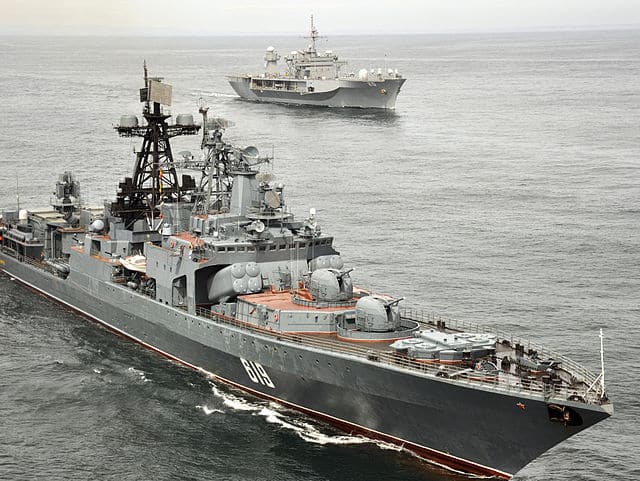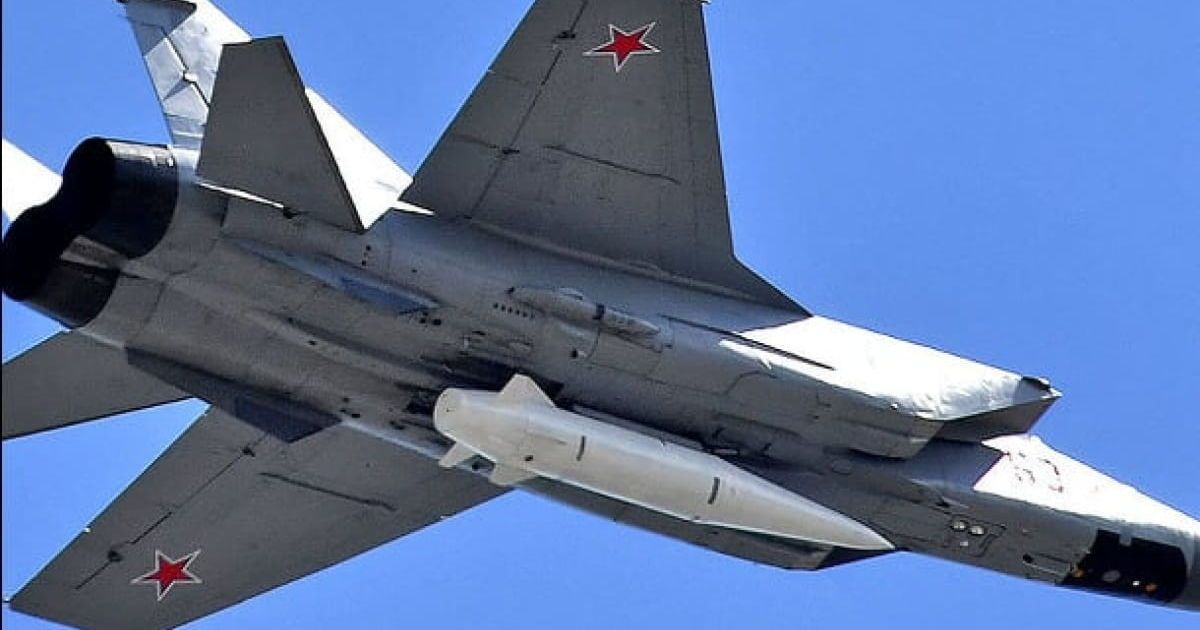Despite Western sanctions, the aggressor managed to significantly increase the production of specific deadly missiles. Hopes for a swift end to Russia’s production of cruise and ballistic missiles for attacks on Ukraine have proven to be premature, to say the least. Furthermore, the current statistics on Russian missile strikes indicate a growing trend in the stockpiling of these weapons. In other words, the Western sanctions aimed at the aggressor country’s military-industrial complex were unable to halt missile production. In fact, there has been a several-fold increase in the production of certain categories of missiles. These newly made Russian missiles are immediately launched, causing the deaths of innocent Ukrainians.
The most recent confirmation of this is the strike carried out on the night of June 13 on a five-story building in Kryvyi Rih. At that time, a strategic cruise missile Kh-101 killed 11 local residents, and two more later died from injuries. As stated by the head of the Office of the President, Andriy Yermak, the killer missile came off the assembly line in April 2023. He also added that approximately 50 components in this missile, mainly microelectronics, were produced in countries of the free world and supplied to Russia through various channels, bypassing the imposed sanctions.
Glavkom (Ukrainian news website) has calculated that during the first 16 days of June alone, Russian military criminals carried out 114 missile launches using: Kalibr, Iskander, Kinzhal, and Kh-22 missiles. However, the majority consisted of Kh-101/Kh-555 missiles, a staggering 70 launches. A similar trend was observed in May when Russia inflicted the highest number of strikes (114) on Ukraine, also using Kh-101/Kh-555 missiles, 106 of which were successfully intercepted by Ukrainian air defense forces. Only over Kyiv in May, 85 missiles of various types were destroyed. Such an onslaught of missile terror has never been experienced by any city in the world before.
Putin’s favorite missile
By the way, the effectiveness of Ukrainian air defense systems against Kh-101/Kh-555 missiles reached 93% in May. However, both Kalibr and Iskander missiles of both types (ballistic Iskander-M and cruise Iskander-K), the acclaimed hypersonic Kinzhal, and Kh-22 missiles were all destroyed by Ukrainian military with a 100% success rate last month. Therefore, it is precisely with the newest Kh-101 missiles that occasional but still impactful hits occur, bringing immense sorrow, suffering, and devastation to ordinary Ukrainians.
Before the June shelling of Kryvyi Rih, this particular type of Russian missile had already caused mass casualties among civilians on April 28 in Uman and Dnipro. And on the night of May 18, 29 out of 30 Russian missiles were intercepted by Ukrainian air defense systems, with only one hitting an infrastructure target in the Khmelnytskyi region. Once again, it was Kh-101/Kh-555 missile, and upon careful examination of the debris, it was determined that it was not just manufactured in 2023, but specifically in the second quarter of this year. In other words, this missile was no older than one and a half months.
See also: 500,000 euros for avoiding sanctions. How law firms in Europe help Russians
In May, Ukrainian military intelligence shared its data on the current production volumes of various Russian missiles with the public. According to the Deputy Chief of the General Staff Intelligence Directorate of the Ministry of Defense, Vadym Skibitskyi, Russia is still capable of producing approximately 35 Kh-101 cruise missiles every month. Additionally, they can produce up to 25 Kalibr cruise missiles, up to five 9M723 ballistic missiles, for Iskander-M operational-tactical missile systems, and two hypersonic aeroballistic missiles Kinzhal.
Based on this information, as well as their own data and analysis of foreign colleagues’ research (such as the May report from the American Center for Strategic and International Studies, CSIS), Ukrainian military experts from Defense Express have made their own calculations. According to their estimates, during the first five months of 2023, Russia was able to produce up to 125 Kalibr cruise missiles and up to 175 air-to-ground class Kh-101 missiles. Furthermore, the production rate of Kalibr missiles during this period has effectively increased by 66%, while the production of Kh-101 missiles has approximately increased by 20%.
However, if we compare it to the “peacetime” production (Russian propagandists claimed that before the full-scale invasion, the Russian military-industrial complex produced only 120 Kalibr and Kh-101 missiles per year, approximately 10 units of each type per month), Russian troops have now managed to increase the production of Kalibr missiles by 2.5 times and Kh-101 missiles by at least 3.5 times. In other words, Putin and other representatives of the military-political leadership of the aggressor country, boasting about mythical “analogues,” have actually focused their real efforts on only two types of missiles — Kalibr and Kh-101, with the latter turning out to be the favorites.
Who and how bypasses sanctions
“The production of Soviet-type missiles is essentially impossible; the old technological chains have long been destroyed, and no surplus can restore them. All modern weapons are based on modern technologies, microchips. For example, 80% of the Kalibr missile is Japanese and American. Therefore, Russia is currently in a rather hopeless situation,” explained Alexander Kovalenko, a leading expert at the Center for Military-Political Studies, to Glavkom a year ago.
The main calculation, of course, was based on the effectiveness of Western sanctions.
Then, in a detailed dossier on all of Russia’s missile weapons, it was revealed which specific missiles were used by Russian troops, how many were produced in total, and whether Russia has the ability to replenish stocks of these weapons. At that time, a bold assumption was made regarding the Kh-101 missiles: considering the active use of this type of cruise missile in Ukraine, it was speculated that their reserves were depleting. Even more optimistic were the predictions regarding the impossibility of resuming the production of Kalibr missiles, which unfortunately did not come true. For example, Kalibr missiles were being produced in Russia in three shifts from the very beginning of the full-scale war.
It would seem that everything would come to a halt with the depletion of Western components stored in Russian military factories, which are critical for such high-tech production. After all, the current sanctions regime imposed by the civilized world on Russia strictly prohibits new supplies of electronic components for the Russian military-industrial complex. However, the analysis of missile debris, with which the Russian army devastated Ukraine’s energy infrastructure last heating season, shocked many international experts.
As reported by the Swiss publication Blick in December of last year, a group of British researchers from the analytical center Royal United Services Institute discovered Swiss microprocessors from STMicroelectronics (headquartered in Geneva with manufacturing facilities in Italy, France, and Singapore) in the downed Kh-101 cruise missiles over Ukraine. It was found that one of these missiles was launched in the summer of 2022, and the other was launched in the fall of the same year, meaning they were produced after the implementation of several waves of anti-Russian sanctions.
According to German journalists from Spiegel, during 2022, the German company Elix-St sent dozens of batches of microelectronics to Kazakhstan, despite previously not exporting goods there and directly supplying everything to Russia. Additionally, as recently disclosed by Ukrainian military aviation expert Valeriy Romanenko in an interview with the Russian-language American channel Current Time TV, the electronic computing machines, navigation system, and communication system of the same Russian Kh-101 cruise missile are simply impossible without foreign components, primarily from the globally renowned American company Texas Instruments. Moreover, high-tech components from Germany, the Netherlands, Switzerland, and Taiwan are also essential.
“How does Russia obtain numerous radio-electronic components? For example, they are supplied under contract to Armenia. There is a branch of some Russian company in Armenia. The shipment is imported, for instance, to St. Petersburg. It is then loaded onto a train, supposedly to be delivered to Armenia, but in reality, it goes to a defense enterprise in Russia. The company in Armenia puts a checkmark indicating that we have received everything. That’s how it works. The same goes for Kazakhstan, Georgia, Cyprus, and Turkey. With China, they don’t hide it much. Besides, the volume of Chinese domestically produced radio-electronic components is not significant. They are mainly used in products for the ground forces,” explained Valeriy Romanenko, simplifying the methods of circumventing sanctions.
Ways of real counteraction
However, according to analysts, the nightly Russian missile attacks are becoming increasingly senseless and resource-consuming. It has reached the point where launching just six Kh-101 missiles over Ukraine requires the deployment of six strategic bombers into the air. One of the most logical explanations is that at the current rate of Russian missile terror, the volume of two months’ worth of missile production is expended in just one and a half weeks. If the missile production is significantly reduced through sanctions pressure, mass attacks may be completely forgotten.
However, according to Ambrose Evans-Pritchard, the editor of the world economy department of the British newspaper The Daily Telegraph, “sanctions against Russia have become an unexpected success story for developed democracies, and Putin’s ability to wage a military war against Ukraine and a geopolitical war against the liberal world is systematically undermined with each passing month.” One could fully agree with such an assessment, but only in the global historical dimension, where the Kremlin’s dictator is indeed rapidly losing his potential for conducting a modern high-tech war.
However, in the current situation, even compared to winter, the mass missile strikes by Russia pose threats to the lives of Ukrainians throughout the country. Therefore, Western leaders have stopped waiting for sanctions to take effect, relying on somewhat virtual “success stories,” and have decided to strengthen Ukrainian air defense even further. Against the backdrop of intensified missile terror from Russia, on June 15th, the defense ministers of the United Kingdom, Denmark, the Netherlands, and the United States issued a joint statement on urgently providing Ukraine with air defense systems to protect critical infrastructure from Russian attacks. The following day, Germany’s Defense Minister, Boris Pistorius, announced that Berlin would immediately provide Ukraine with an additional 64 guided missiles for Patriot systems. Such specific counteraction proves to be highly effective and noticeable to the entire Kremlin’s leadership.
Originally posted by Oleh Polishchuk on Glavcom.ua. Translated and edited by the UaPosition – Ukrainian news and analytics website
See also: Lancets: How Russia manufactures kamikaze drones despite sanctions




